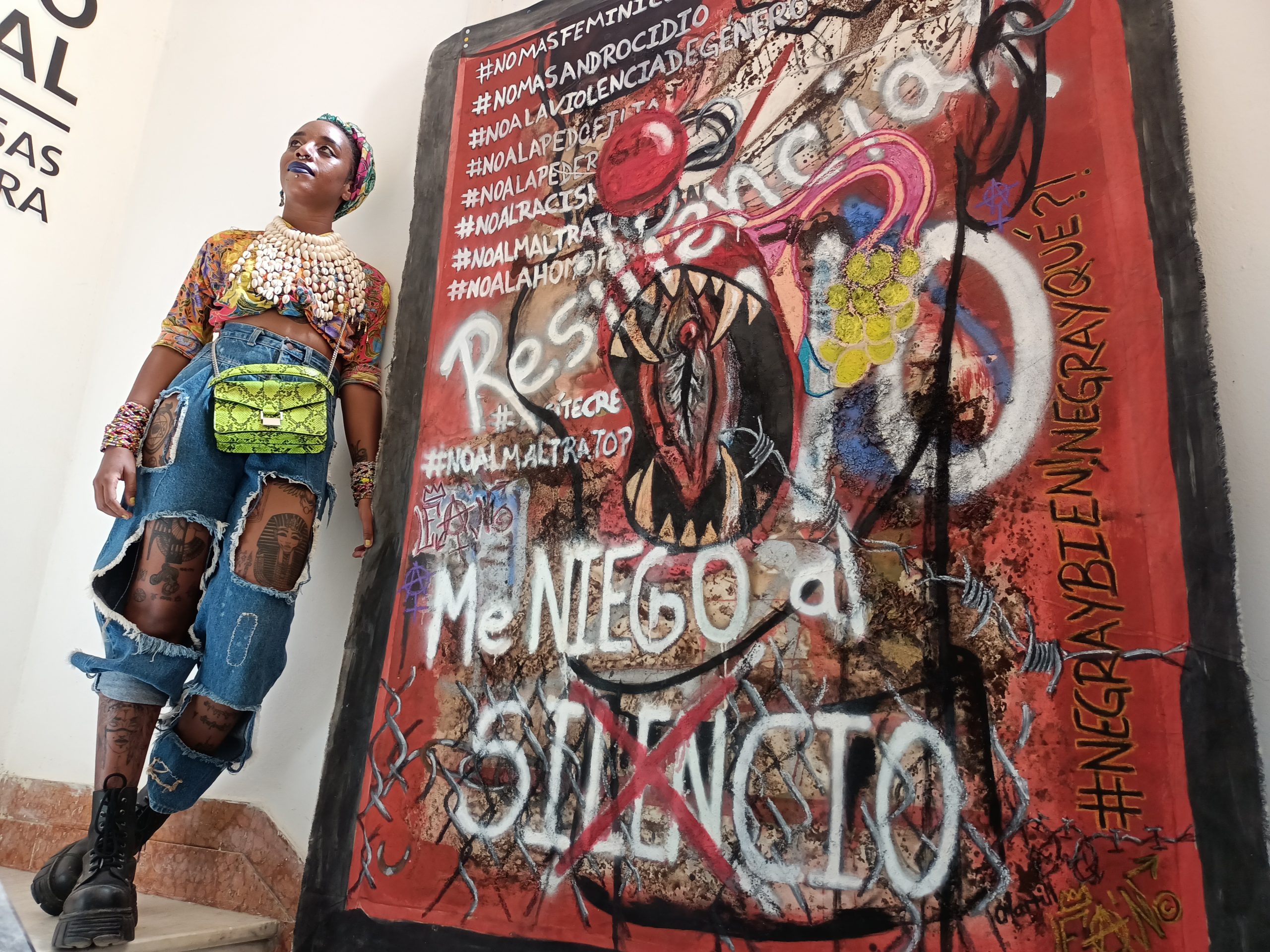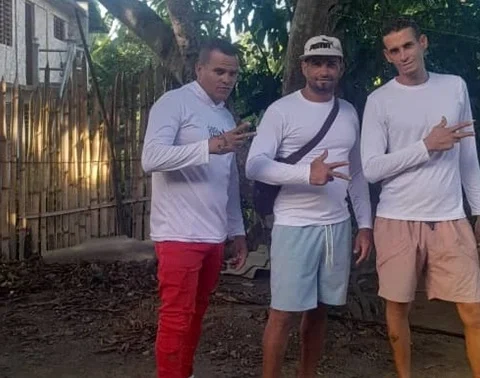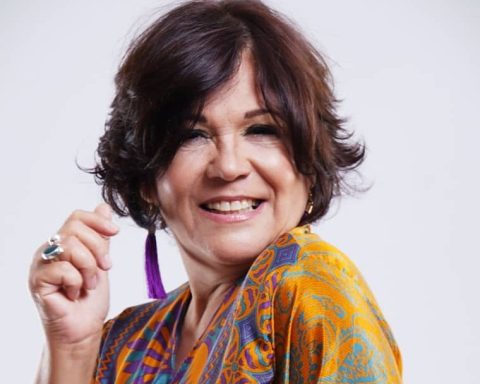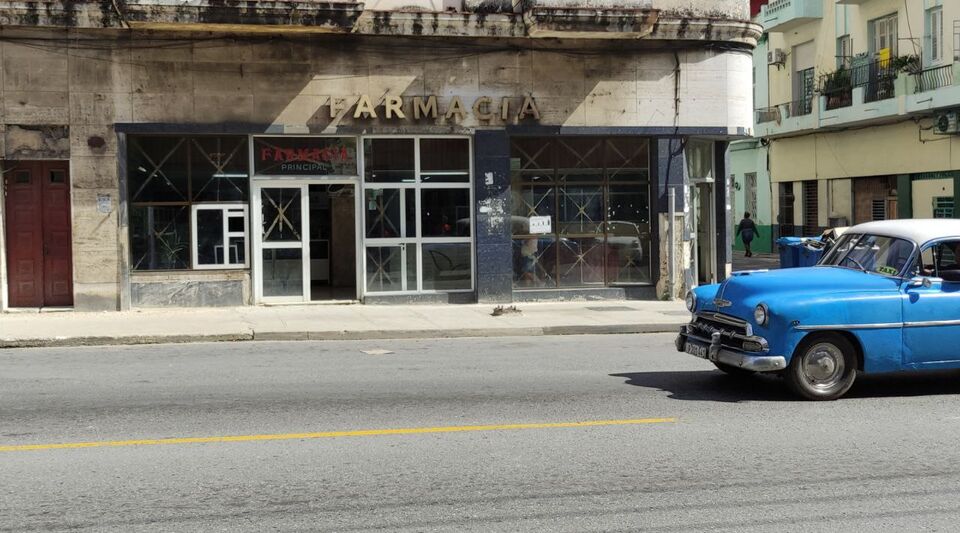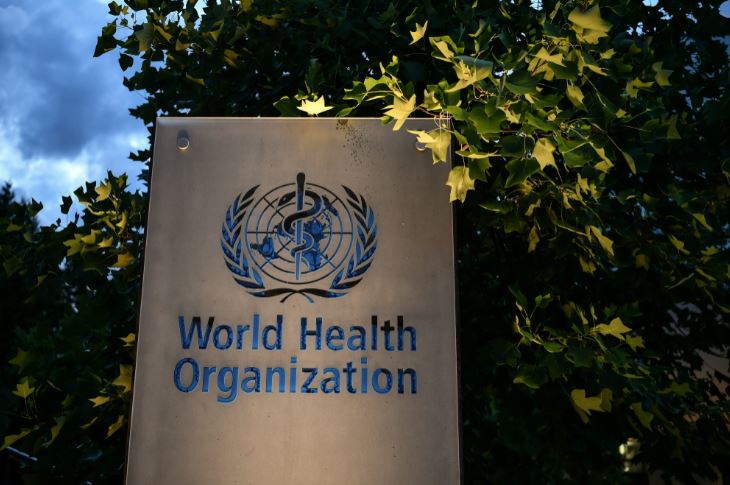For the first time in Cuba, entire days were held for the Day of Afro-Latin, Afro-Caribbean and Diaspora Women. The date, agreed since 1992 and to be commemorated every July 25, is of special significance for black and racialized women due to the history of our presence on the continent and, also, to remember that our identities are affected by multiple discriminations such as gender, race and social class.
Although the revolutionary project initiated in 1959 in Cuba promoted the principle of equality among all people, not only formally but also in reality with concrete actions, currently social inequalities on the island affect in greater depth to various populations with vulnerabilities, among which are women of color. However, the ancestral heritage of resistance and resilience emerge in the harsh daily life from its cultural and artistic forms, even in the survival of informal life/employment/economy.
This wide range of diverse realities that Afro-Cuban women face was reflected in the First Day for the International Day of Afro-Latin, Afro-Caribbean and Diaspora Women that was dedicated to the recently deceased poet Georgina Herrera and organized by a group of women from different fields: Yulexis Almeida Junco, Norma Rita Guillart, Lisandra Torres, Yeniset Núñez, Rosaida Ochoa and Maydi Estrada Bayona.
The program included activities between July 18 and 25. Between expressions of different manifestations of art to academic colloquiums, going through the experience in community projects, the celebration and the commitment for an articulated fight against racism and sexism that particularly impact racialized women were intertwined by the pulse of the vindication and memory.
At the inaugural event, the researcher and activist Gisela Arandia received the honorary distinction Nelson Mandela Chair, awarded by the Chair of Studies on Afro-descendants of the same name, belonging to the Center for Psychological and Sociological Research (CIPS), from the hands of Dr. Rosa Campoalegre Septien. In her words of thanks, Gisela recalled the struggles and contributions of black women to the history of the Cuban nation, the great challenges of Cuban women in the face of the crisis over COVID-19 such as those held in hospitals, isolation centers and in the preparation of vaccines. In addition, he requested a minute of silence in memory of the African leader Nelson Mandela on the grounds that his day was celebrated on that date.
The evening, which was also accompanied by the presence of the National Secretary of the Federation of Cuban Women, Teresa Amarelle Boue, featured the arts, the theater, the cinema, the oral narrators who gave us tears and laughter, and also the percussion and singing by the Obiní Batá ensemble, made up of women who professionally play the batá drums and who have become a paradigm of challenging machismo within Afro-Cuban traditions.
Several times the name of France Marquez as an example of a black woman in the struggles for the emancipation of the continent. The voice of Afro-feminist activism was also present thanks to Diarenis Calderón Tartabull, curator, popular educator and co-founder of the collective “Nosotrxs”. The activist mentioned those “other” protagonists of daily life, almost always invisible and marginalized, such as street vendors, prostitutes or women who engage in transactional sex, housewives, migrants, those inserted in the informal market of the economy, mostly women of color. Her speech raised emotions among the public and applause.
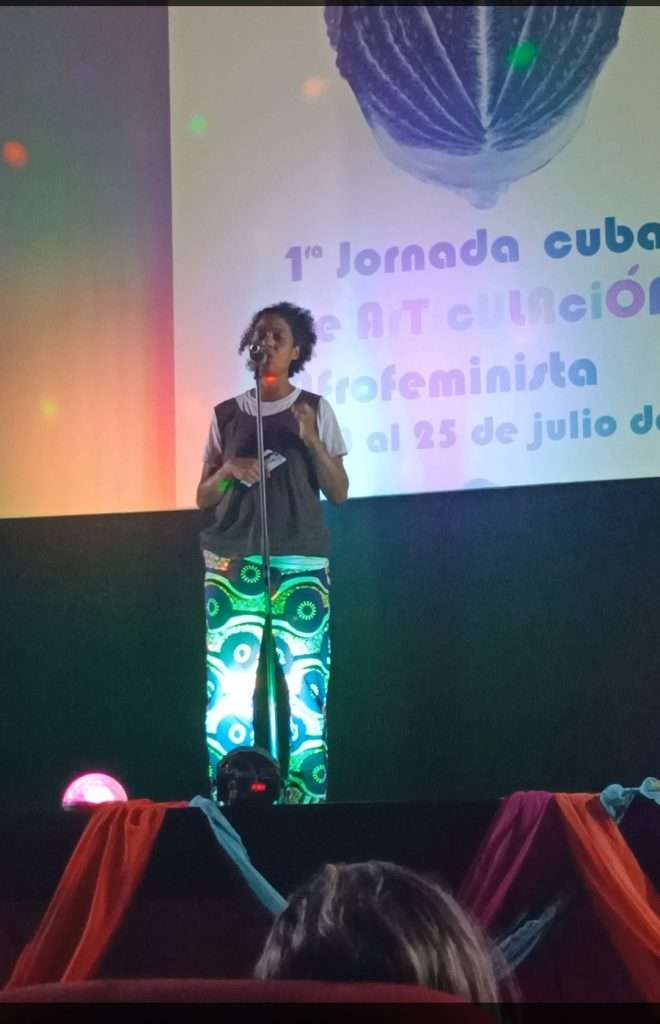
The most transcendental thing was to attend a birth, as Dr. Maydi Bayona said during the inauguration, that of the Cuban Afrofeminist Articulation made up of a very varied and multiple registry of women, groups, projects and collectives, from the academy to the neighborhood organization. Without a doubt, the date was historic.
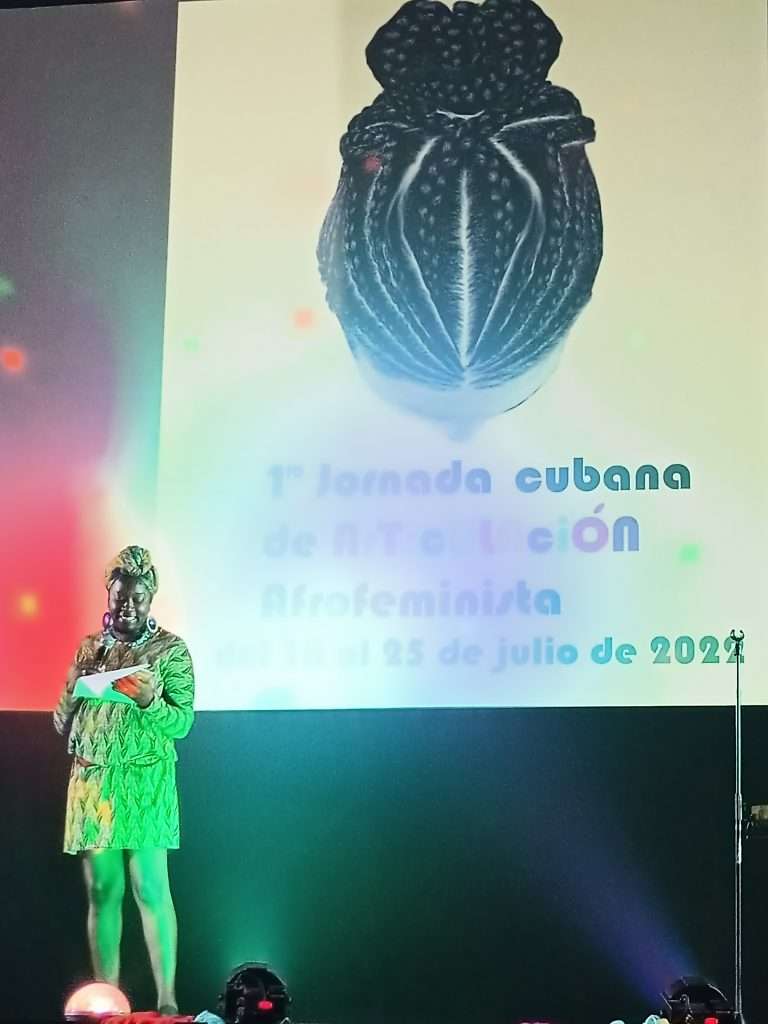
In the following days there were presentations, panels at the Casa de Africa, moments of traditional music starring women in the rumba (Intangible Heritage of Humanity), international guests from the Congo, Haiti and Burkina Faso, and a beautiful collective exhibition of plastic arts. named “Roads”.
The exhibition, which is still on display at the gallery of the National Council of Houses of Culture (5th Street between C and D, Vedado), includes the works of more than ten artists, between the ages of 20 and 60, and addresses the problems of Afro-descendant women in particular and, also, their creative power in connection with the universe and nature.
Another memorable day took place on July 21 at the Infanta Multicine, where the Colloquium “Women of African Descent in Cuba” took place, nurtured by the Articulation itself and with the support of the National Program against Racism and Racial Discrimination. The master conference was given by Dr. María del Carmen Zabala with the theme “Inequalities and vulnerabilities: intersectional and prospective analysis of black Cuban women.”
However, a symphony of voices, sentiments and demands converged in the venue, from which an agenda of actions committed to the inequalities that affect the lives of Cuban racialized women and, in addition, with the racialized population in the country of overall way.
The Colloquium was divided into five panels: 1- Racism and anti-racist activism in current Cuban society; 2- Contribution of Afro-descendant women to history, culture and science in Cuba; 3- Cimarronas, women in resistance (in charge of the Nelson Mandela Chair); 4- Vulnerabilities of Afro-descendant women; 5- Afro-descendant women and the media.
In a brief summary, the importance of the following points can be pointed out:
- The legacy of black women in the history of Cuba, mentioning with special emphasis the history of Carlota’s rebellion (7 years before the historic Soujourner Truth speech in the United States considered the forerunner of black feminism), and the significance of Minerva: Quinquennial Magazine for Women of Color and the Afro-Cuban women who made it possible.
- The historical significance of the solidarity of the Cuban people in the fight against Apartheid on the African continent and the rescue of the life stories of those who carried out that feat; also pointing out the debt with the attention to the surviving combatants of those deeds since, at present, many live in deplorable conditions.
- Fidel’s presence in the Cuban delegation during the Third World Conference against Racism, Racial Discrimination, Xenophobia and Related Intolerance, known as Durban 2001, and his firm commitment to the elimination of racism in Cuba and worldwide.
- The need for study programs and school literature from an early age to incorporate the contributions of people of African descent and for it to be, above all, an anti-racist education. In this particular, the work of Esteban Morales, recently deceased, was recalled, and that he pointed out the “white education” of teaching in Cuba as a dilemma to overcome.
- The biases of racial discrimination that persist in the country’s schools and that begin to show their negative consequences with greater clarity during secondary education, from a racist self-perception to social interactions.
- The racialized feminization of poverty, informal employment, internal migration, heads of households, unemployment, precarious housing. Situations that have worsened with the current economic crisis and with the latest measures implemented from which the dependence on currency to reproduce life has become greater, when women of color are the least favored in terms of remittances from abroad or trips abroad, therefore, with less ability to access foreign currency.
- The situation faced mostly by women of color who have relatives in prison (because the majority of the prison population is non-white), the need for programs that attend to them, including the fact that the majority of women deprived of liberty are also Afro-descendants.
- This is linked to the criminalization of the informal market/employment in which they are overrepresented.
- The inequalities that affect the health of black and mestizo women throughout the country have been aggravated after the pandemic, becoming the population group with the lowest life expectancy of all. Hence the need for health studies to consider race or skin color as a marker to investigate.
- Persistent racism on Cuban television and in other media. Although there has been progress in the representation of people of African descent in television programs since the call made by Raúl Castro, it has not been enough because a Eurocentric vision of it persists. Even when female TV presenters are black, they almost always end up assuming stereotypes of European beauty.
- The importance of Afro-aesthetics, of working in communities and neighborhoods, of Afro-descendant women knowing how to treat their hair, how to comb their hair, and how to love and value themselves with natural hair.
- The need for an intersectional and cross-sectional perspective in Cuban laws where race and gender converge as a more complex network of discrimination, therefore, of a necessary overlapping attention from the legal point of view, including the anti-punitivist vision. It is necessary to have a law specifying the concepts related to racism that are currently articulated in the Constitution and the draft Criminal Code (to give two examples), but which are not specifically defined by the term “skin color”. In addition to the fact that an adjectival legal implementation of the constitutional mandate against racism is required.
Another luxury appointment took place at the Institute of Philosophy, next to the Berta Cáceres chair, with a panel entitled “The Afro-Caribbean woman: A look from within. Dialogue between culture, history and decoloniality”, organized by MsC. Aracely Malagon. The panel opened new lines of research and reflected the need for more efficient public policies from intersectionality and decoloniality. Also, on the same day, July 22, at the Varona amphitheater, Dr. Yulexis Almeida Junco hosted a discussion where Roberto Zurbano, María del Carmen Zabala and Norma Rita Guillart participated, recalling the work and life of Georgina Herrera. At the close, the award-winning documentary “Dialogue with my grandmother” by Gloria Rolando was screened.
Closing the days there were concerts, fashion shows and sale of Afro products, Afro-fairs and a staging by the director Fátima Patterson with the Macubá theater group. The participation of the Quisicuaba and Afro-descendant Neighborhood Network projects also accompanied the activities.
The commemoration for the first time of Afro-Latin, Afro-Caribbean and Diaspora Women’s Day, with the rigor, commitment and diversity with which the conference was held, projects into the future a multi-causal and multi-vocal agenda that pays tribute to a single endeavor: the dignity of Cuban Afro-descendant women. Above all, that the piloting of this great journey has as its protagonist the newly born and highly necessary Cuban Afrofeminist Articulation also envisions new chapters in the history of black, decolonial and diasporic feminism in Cuba.
